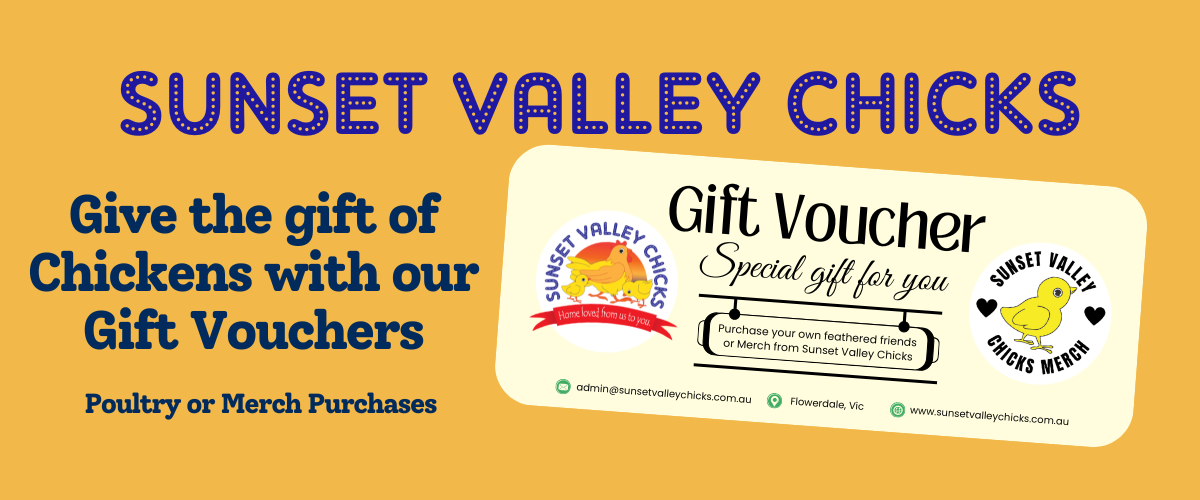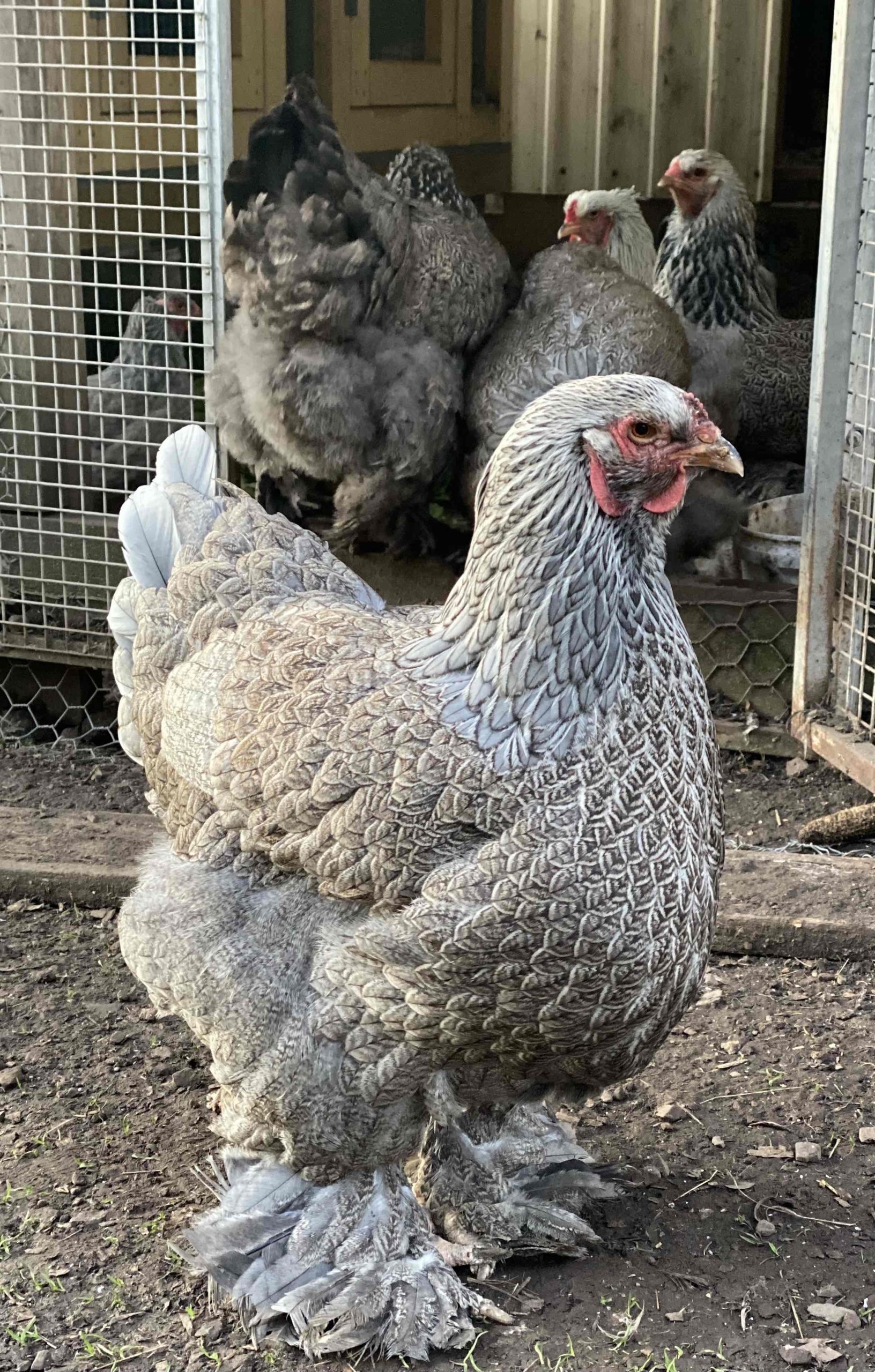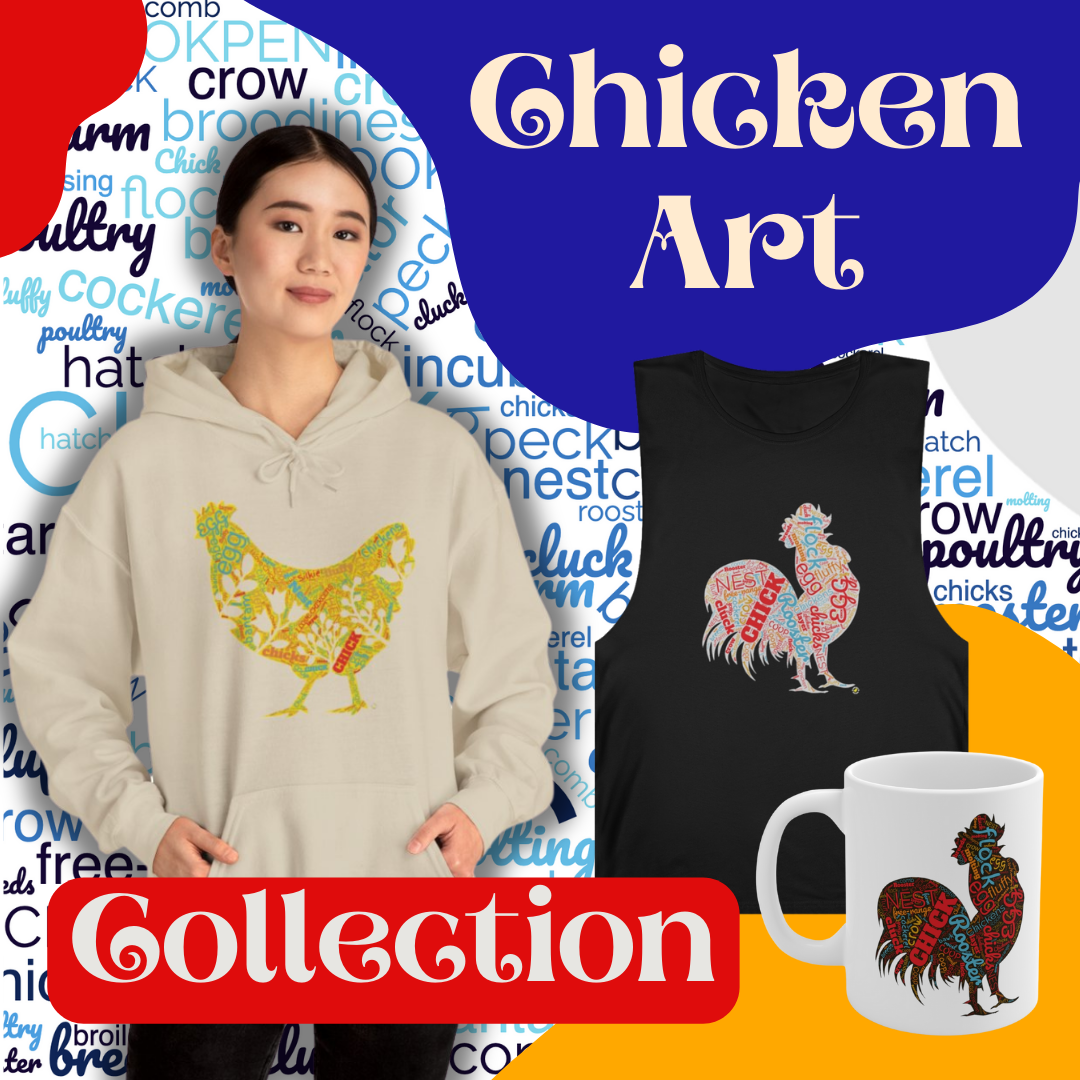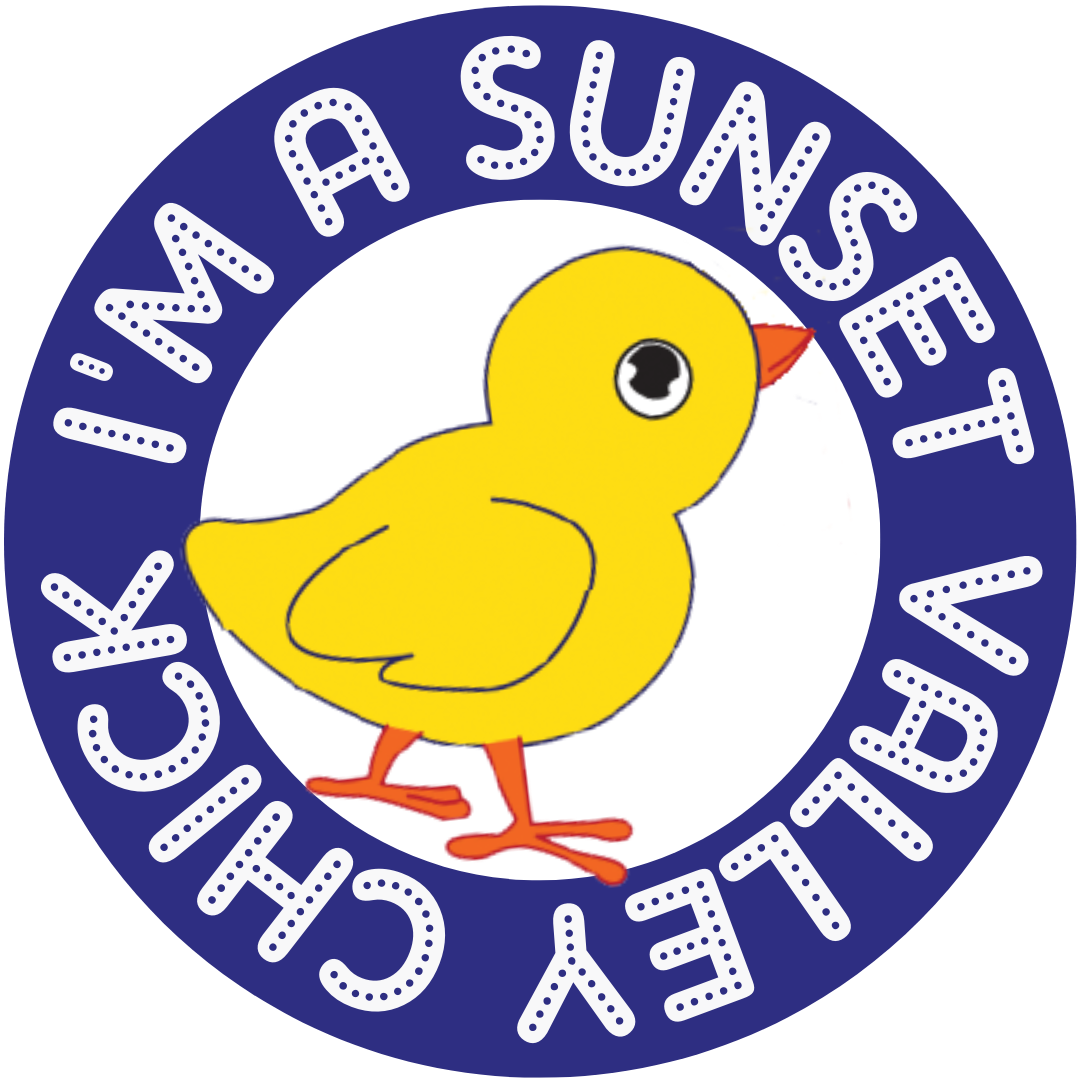
This is a list of terms commonly used in the basic chicken world and the terms we may use when talking chickens.
A – C
Air cell: the air space usually found at the large or blunt end of an egg.
Albumen: the white of an egg.
Amino acids: the simpler building units of protein.
Anticoccidial: an anticoccidial drug used to treat or prevent coccidiosis
Beak trimming: The removal of the tip of the beak of poultry by specially designed equipment to prevent cannibalism and its associated vices.
Breed: A group of birds that reproduce their own likeness in their offspring. A variety is a group within a breed that are distinguished by a difference of a single characteristic eg. feather colour or comb type.
Broiler: A young bird of either sex that is bred and grown specifically for highly efficient meat production. Broilers are usually grown for 5 to 7 weeks of age (alternative term – meat chicken).
Brooder: The equipment used to provide supplementary warmth during the early stages of the chickens’ life. The energy used may come from electricity, gas, oil or from other sources.
Brooding: The period of the first weeks of a chicken’s life when it requires a very high standard of care including the provision of special diets and supplementary warmth.
Broody: The instinct controlled by maternal hormones that causes the female to want to sit on eggs for hatching and to care for the chickens that hatch.
Caeca: The two blind gut of the digestive tract attached to the distal end of the small intestine.
Cages: A system of housing where the birds are confined to a wire floor singly or in multiples. With this system the stock do not come into contact with their own or other bird’s faeces which is an important disease control measure.
Candle: To assess some internal characteristics of the egg by viewing it in a darkened room with a bright light behind the egg.
Cannibalism: The practice by some birds of attacking and eating other members of the same flock.
Chalazae: A type of albumen that surrounds the yolk of the egg and extends as creamy white, twisted, ropelike structures into each end to anchor the yolk in the centre of the egg.
Chick: The term used to describe chickens from day old to the end of brooding.
Chick-type drinker: A drinker that is more suitable for young chickens to access water.
Chick-type feeder: A feeder that is more suitable for young chickens to access food.
Clear eggs: Infertile eggs (containing no embryos) usually removed from the incubator during incubation.
Cloaca: The common external opening for the digestive, urinary and reproductive tracts of the fowl.
Coccidiostat: A drug usually added to the feed and used to prevent the disease coccidiosis.
Cock: A male that has finished one season as a breeder. Usually refers to older birds.
Cockerel: A young male from day old to the end of it’s first year of breeding. Often used to refer to young males up to 6 months of age.
Controlled environment housing: An intensive housing system where the operator can control temperature, air quality and light.
Crop: An organ, a part of the oesophagus, located at the base of the neck and used as a storage place for food after eating but before digestion.
Crossbred: A bird with parents of two or more different genotypes (or breeds or varieties).
Crude protein: The nitrogen sources in feed. It is not true protein, as nitrogen is found in dietary compounds other than protein.
Cull: The identification and removal of non-productive birds from the flock.
Cuticle: The outer membrane or bloom on the egg’s shell.
D – F
Dead-in-shell: Chicks that fail to hatch from the egg.
Deep litter: The system of housing where a suitable material called litter is provided on the poultry house floor for the birds to live on.
Disease: Any condition that affects the proper functioning of the bird’s system(s), organ(s) or tissue(s).
Egg bound: An afflicted hen is one that is unable to complete the egg formation and laying process and retains the partially or fully formed egg in the oviduct.
Embryo: The developing chicken in the egg.
Free range housing: A system of housing where the birds have a shelter house and access to an outside area during the hours of daylight.
Fertile egg: Those eggs in which fertilisation of the blastodisc has occurred to create the blastoderm. The joining of the female ovum and the male sperm to create the embryo. Which results to baby chickens hatching.
Flighty: Excitable flock inclined to fly at the slightest provocation.
Flock: A number of birds of the same origin (genotype), age and managed in the same way.
Feed conversion ratio: The relationship between feed production and production (eggs or growth). It is usually expressed as a ratio.
Floor eggs: Eggs laid on the floor of the shed and not in designated nest sites/ boxes.
Fowl: The term used to describe all members of domestic fowl irrespective of age, sex or breed.
G – I
Gizzard: The muscular stomach of the fowl where the food is ground and mixed with the digestive compounds produced by the proventriculus (glandular stomach).
Growers: The term used to describe all stock between the end of brooding and till they reach sexual maturity.
Hen: A female after the first moult. It is often used to describe females after they have started to lay.
Hock: The joint of the leg between the lower thigh and the shank. It is most commonly the region where the feathered portion of the leg ends and the scaly shank of the lower leg starts.
Hover: A canopy used on brooders to direct the heat downwards to the chickens.
Incubation: The process by which fertile eggs are subjected to conditions suitable for the initiation and sustaining of embryonic development and the hatching of strong, healthy chickens.
Incubator: The machine used to incubate fertile eggs.
Insoluble grit: Hard, insoluble material such as granite, flint or bluestone chips consumed by the birds to aid in the grinding of the food in the gizzard.
Intensive system: Any system of housing poultry where the birds are indoors all of the time and do not have access to the outside. It usually entails higher stocking densities.
J – L
Keel: The breastbone or sternum of the fowl. This bone has a large surface area to provide for the attachment of the large muscles of flight (the breast muscles).
Layer: A female in lay. Usually used to refer to females kept solely for egg production for human consumption.
Layer cycle: The period from the onset of lay until the natural moult causes a cessation of production. Usually used to describe the period during which an economic level of production is being maintained.
Lighting (artificial): The use of controlled artificial light to regulate the day length under which the stock are kept.
M – O
Meat chicken: Specifically breed for meat production
Metabolism: The sum of the chemical changes in living cells which provide energy for the vital activities and processes of the body.
Methionine: One of the essential amino acids.
Micro-ingredient: An essential ingredient in the diet that is required by the bird in very small quantities.
Moult: The process whereby the bird sheds its feathers and ceases egg production. It is usually initiated by hormonal influences but is often triggered by stress.
P – R
Pecking order: The social aspect of housing a flock together. Usually one being the most dominater to the most subordinate member of the flock.
Pendulous crop: An enlarged crop usually due to impaction and which hangs downwards in an abnormal way.
Point of lay: Females just prior to starting to lay.
Preen gland (uropygeal gland): A gland located at the base of the tail which produces a special “oil” secretion for the conditioning or preening of the feathers.
Pullet: A female in her first laying season. A pullet is normally 16-22 weeks of age when they will start to lay. Some purebreds can take upto atleast 8 – 10 months before they lay their first pullet egg.
Purebred: A group of birds having the same origin, and able to reproduce their own likeness in their offspring. Purebred birds have the same genes.
Roost: The perch on which fowls rest or sleep. Using tree branches or usually wood.
Rooster: Male bird.
S – U
Sanitise: That part of the cleaning procedure aimed at killing as many germs as possible
Sexing: The act of dividing the flock into into males and females.
Grit: Various sources of calcium for the chicken diet – usually grit form of limestone or eggs or shell fish.
Spent hen: A layer that has reached the end of her egg laying life.
Thermostat: A device sensitive to temperature and usually used to control the operation of temperature modifying equipment.
V – Z
Vent: The common external opening from the cloaca for the digestive system, urinary system and reproductive system.
Vitamin/mineral: A concentrated source of various vitamins and/or minerals mixed together so as to make the adding of them to the diet much easie
Categories
- Blog (68)
- Book Us (1)
- Breeding Pens (30)
- Commercial Layers (7)
- Farm Visits (2)
- Hatch your own (5)
- Home Page (14)
- Markets (9)
- Merch Store (2)
- Raise Your own Chicks (8)
- Rescue Hens (1)
- School Programs (1)
- Unwanted Poultry (1)
Most Popular
Follow Us
Related Posts

Gift Vouchers Now Available
Give the gift of fluffy joy with a Sunset Valley Chicks Gift Voucher! Perfect for chicken enthusiasts and hobby farmers, our vouchers open the door

Sunset Valley Chicks Breeding Pens For 2024/2025
Check out our pens sorted for 2024/2025 here https://sunsetvalleychicks.com.au/current-chicken-breeds/ We are excited to enter our tenth year of breeding most of these breeds and as

Give The Gift Of Chickens With A Sunset Valley Chicks Gift Voucher
Give the gift of fluffy joy with a Sunset Valley Chicks Gift Voucher! Perfect for chicken enthusiasts and hobby farmers, our vouchers open the door
Its Hot So Come Early This Weekend. Where To Find Us!
This Saturday we will be set up at Valley Produce Wallan from 8am-11am and Sunday at Hurstbridge Market From &am-11am due to it being a

This Saturday Find Us At Valley Produce
Come say hi this Saturday at Valley Produce Wallan where we set up.(Opposite the 7/11 on the main corner. Address 170 Northern Hwy Wallan. 9am-1pm
Welcome to our Fun & Funky Merchandise Store.
Fun & Funky Merch our online store is now available. Designed by two besties we wanted to share our love to the chickens with a










